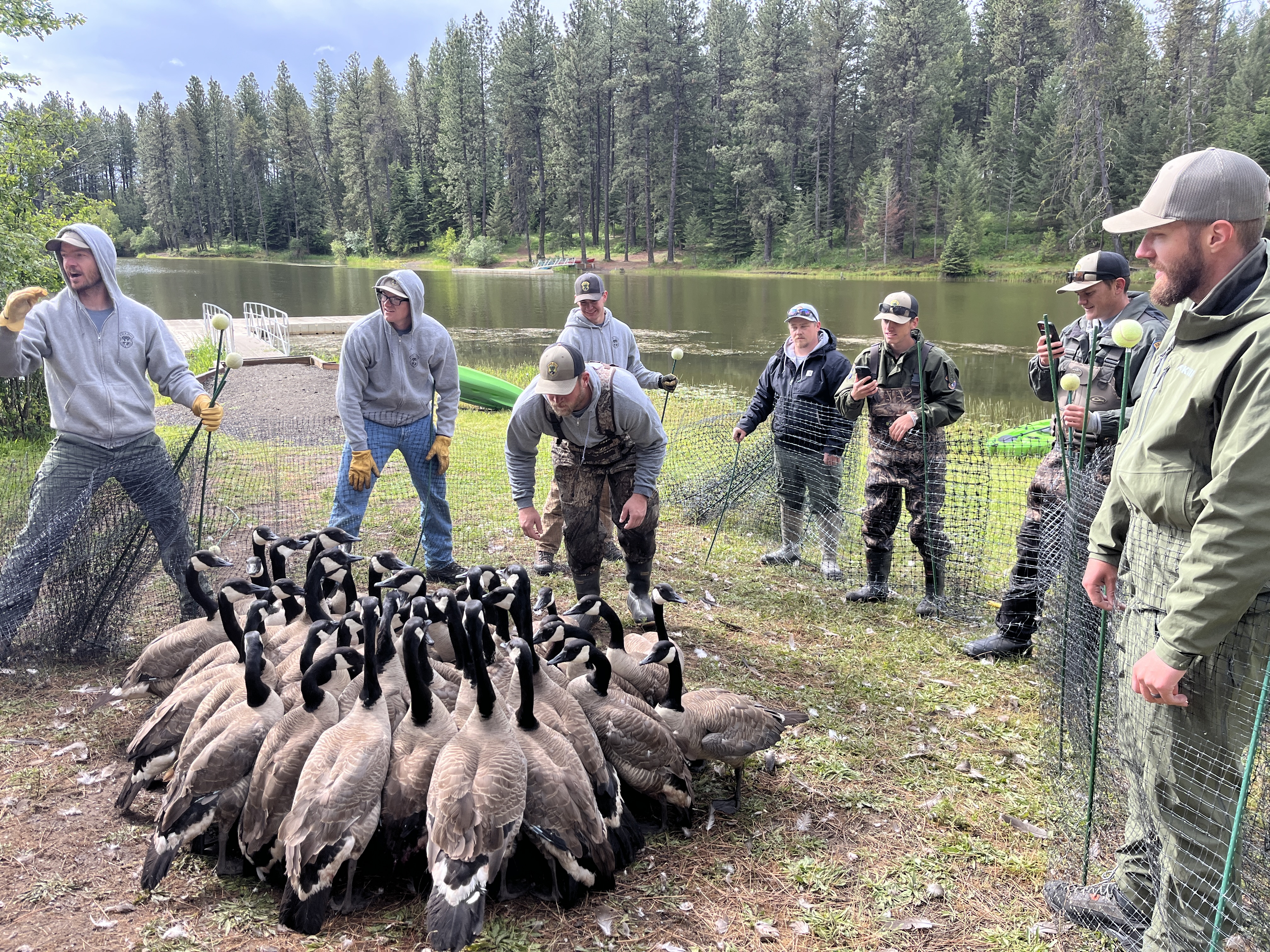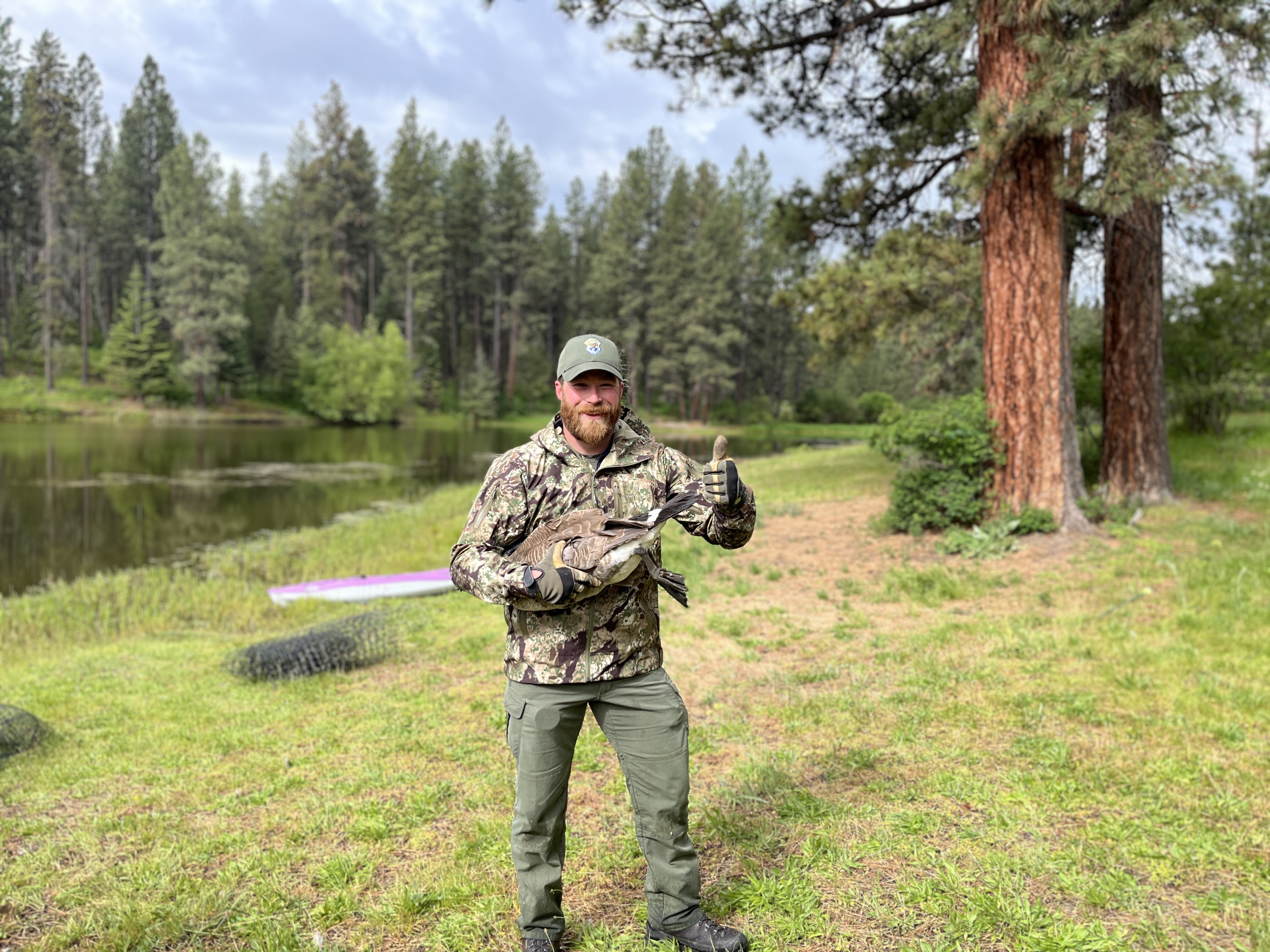Thousands of ducks and geese are banded across Idaho each year as part of a federal waterfowl monitoring program. This June, Fish and Game staff led banding efforts at two locations within the Clearwater Region- Winchester Lake State Park and Lewiston Country Club. A total of 75 geese were processed this year (50 females and 25 males) including 64 newly banded geese and 11 geese that had previously been captured and banded by IDFG. Over the last two years, a total of 163 geese have been banded in the Clearwater Region.
You may be wondering, how does Fish and Game capture wild geese and handle them while carefully placing a metal band on their leg? Well, that is a good question. It can be a tricky endeavor.
Several staff members are required for a successful goose round-up. Also, timing is a crucial component of a successful round-up. Biologists take advantage of the molting period, when geese are replacing their feathers, so that geese are less prone to flying and evading capture. During the capture event, a few staff are assigned to watercrafts to push geese toward a temporary pen set up on the bank. The remaining staff are spread out on the shore to help funnel geese to the pen. As the geese move onto the bank and into the pen, staff surround the pen to contain geese. One to two people enter the pen to catch geese and hand them to others for processing and banding. Experienced staff carefully age, sex and securely attach a band to each goose prior to their release. This process tends to go smoothly, and staff members are cautious to make sure that birds are handled with minimal disturbance.





